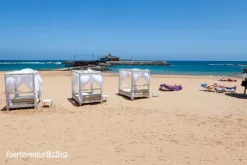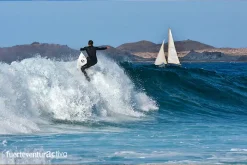Fuerteventura beaches, FUERTEVENTURA WITH CHILDREN, What to see in Fuerteventura ?
What to visit in El Cotillo?
The maritime atmosphere that is breathed in the streets of El Cotillo, has managed to seduce, for decades, the thousands of tourists who visit Fuerteventura.
Seafaring soul, a rich gastronomy and its lively atmosphere have made this town in the municipality of La Oliva one of the most outstanding holiday destinations on the island.
If the exceptional beaches of El Cotillo attract locals and visitors, the pedestrian avenue in front of the Muellito beach and its surroundings become the ideal place to taste the Majorera cuisine.
The unique architecture, its bars and restaurants with views of the Atlantic, are some of the claims of El Cotillo. But, not everything is beaches, surfing and good food. El Cotillo has a long history, which we will help you understand here.
Origins of El Cotillo.

In the middle of the 15th century, just a few decades after the Castilian colonization of Fuerteventura, Punta del Tostón (where the lighthouse is located) became one of the most important piers on the island. Hundreds of ships entered and left full of merchandise to other ports, whether they were Canary Islands, peninsular or international.
Over time, a deeper anchorage was needed. A sheltered cove was chosen for its location, where El Cotillo is currently located.
At that time this area was unpopulated. The closest settlement was located a couple of kilometers inland, on the Roque. In fact, El Cotillo was called “Puerto del Roque”, as it was part of that town.
First, various infrastructures related to the transit of goods were built at the foot of the sea, such as the customs port and various barracks. Later, the houses were built, timidly beginning to populate the bay. However, El Cotillo was unprotected and at the mercy of continuous attacks by pirates and corsairs.
At the end of the 18th century, with the construction of the Torre del Tostón, El Cotillo emerged. For this reason, it is one of the visits that you should not forget.
Tostón Tower

The tower of the Tostón rises imposingly before the strong onslaught of the waves. The fortification was built at the end of the 18th century. Its function was to defend the coast and protect the ships anchored, in the port of Cotillo, from the attacks of Berber, British and French pirates.
The Torre del Tostón has a circular plan, with two floors in height and a platform with a parapet. The interior is accessed through a stone staircase that leads to a drawbridge with iron chains. The door is located a couple of meters above the ground.
To fulfill its mission, the terrace of the tower would be armed with 4 cannons. The bastion would also have a gunpowder store and rifle support.
There is a false belief that the Torre del Tostón, or Rico Roque, was built on another fortification, built by Jean de Bethencourt in the 15th century. However, this bastion called Castillo de Rique Roque was located in Pozo Negro, right in front of the Atalayita Town.
El Cotillo lime kilns

To the right of the Torre del Tostón we can see five lime kilns placed consecutively. Lime was obtained from them, through the combustion of caliche stone.
These structures are frustoconical in shape. They have a more open part at the top to facilitate the deposit of coal. and a door in the lower part to load the caliche stone.
The lime industry, contributed for centuries to the Majorera economy, since it needed a large labor force and did not depend on the weather, as it did with cereal production.
Hermitage of the Virgen del buen viaje (Virgin of Good Trip)
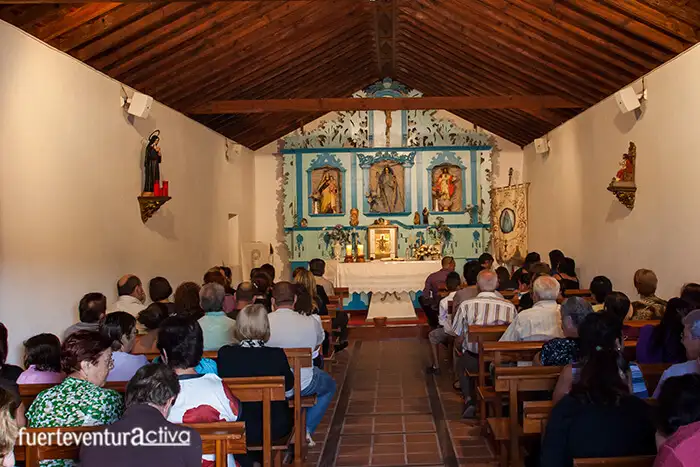
There is no fishing village without its hermitage. El Cotillo has a small and charming sanctuary dedicated to Our Lady of Good Trip. The hermitage was founded at the end of the 17th century by Sergeant Major Sebastián Trujillo, a member of the Inquisition, in a farmhouse he owned.
To lift it he looked for a strategic place. It should be perfectly visible from the town of Roque and from the coast. For many years it was a visual reference both for the freight boats, which approached the port of Roque, and for the fishermen who worked in the area.
The hermitage consists of a single rectangular nave, without a differentiated main altar and with a sacristy attached to the wall of the gospel.
The town of El Cotillo celebrates its patron saint festivities on the Sunday following Ascension Day: August 15. The Virgin of Our Lady of Good Journey participates in two processions. One of them, the most massive, is a maritime-terrestrial procession in which the town’s boats are decorated and the people who lost their lives at sea are remembered.
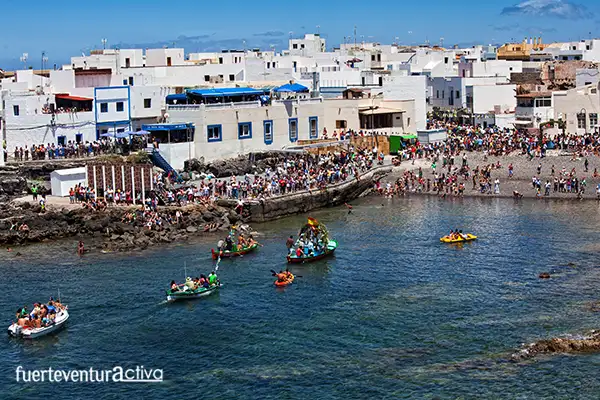
The other is a night procession that takes place every 2 years. The Virgin leaves, carried on the shoulders of the devotees, from the hermitage of El Cotillo and goes to the town of Roque lit by torches.
Draft Festival
El Cotillo has a private festival, which is part of the beginning of the festivities in honor of the Virgen del Buen Viaje: “la Calada”.
This traditional celebration has been going on for more than 4 decades.
Fishermen and residents of El Cotillo get up before dawn, when the tide is high, and go to the River, near the lighthouse. There they tend nets from one end of the river to the other. When the tide is low enough, the harvesting of the fishing gear begins.
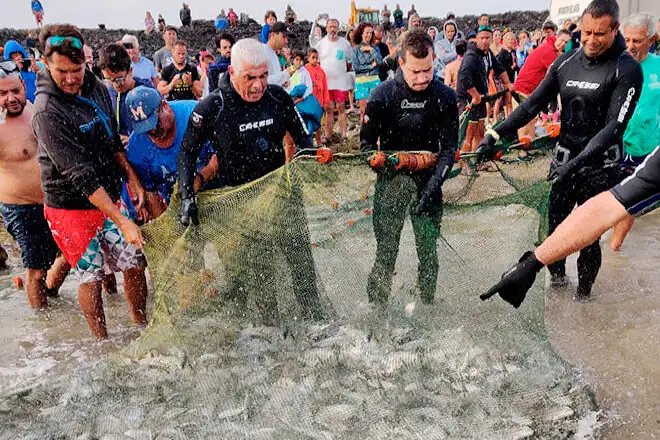
It is quite a spectacle to attend this tradition. About 30 people both from inside the water and from the shore and boats, are reducing the fence of the chinchorro to direct it towards the sand. More than 2,000 kilos of fish, mainly salemas, are harvested in just a few hours.
After being caught, the fish is taken to the dock, where the neighbors clean and prepare it. Once salty they are put to dry on the pebbles of the beach.
On Thursday night the traditional asadero of jareas, papas arrugadas and gofio is made. The leftover fish is distributed between Cáritas and other non-profit institutions.
Where to stay in El Cotillo?
At FuerteventurActiva we have more than 6 tourist accommodation in El Cotillo at your entire disposal.
Beachfront accommodation: La Puntilla I, La Puntilla II
Apartments in a private urbanization with swimming pools: Cotillo Blue.
Accommodations to make you feel at home: Casa la Caleta, Apartament Las Llanadas, Cotillo Lagoon Beach 6, Cotillo Suite, Cotillo Vistamar
Fuerteventura1 Fuerteventura4



